Tomatoes are one of the most popular crops for home gardeners. Their juicy fruit, vibrant color, and versatility in the kitchen make them a staple in gardens across the world.
However, to get the most out of your tomato plants, proper support is crucial. That’s where trellising comes in.
Trellising not only keeps your plants upright but also improves airflow, reduces diseases in plants, and makes harvesting easier.
In this comprehensive guide, we’ll explore why trellising is important, the best methods to trellis tomatoes, the materials you’ll need, and expert tips to maximize your harvest.
Why Trellis Tomatoes?
Table of Contents
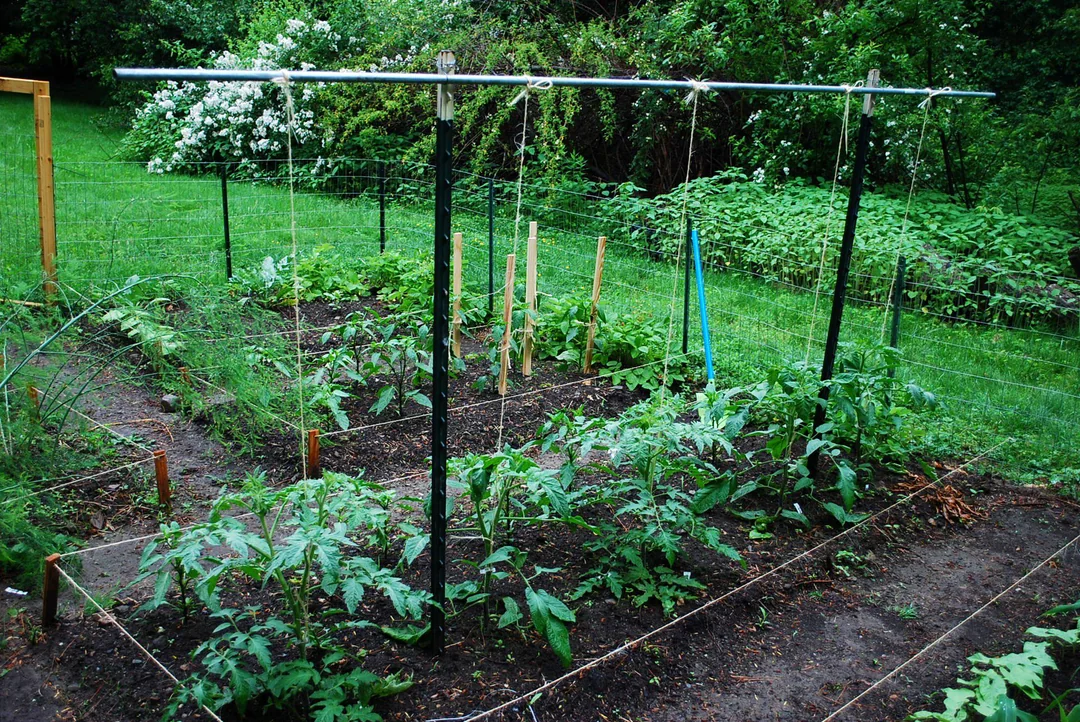
Tomato plants, especially indeterminate varieties, can grow vigorously and sprawl across the ground if left unsupported. Trellising benefits tomato plants in several ways:
- Improved air circulation – Helps prevent fungal diseases like blight and powdery mildew.
- Better sun exposure – Promotes more even ripening of fruit.
- Ease of harvesting – Makes fruit easier to see and pick.
- Space efficiency – Vertical growth saves room in the garden.
- Cleaner fruit – Keeps tomatoes off the soil, reducing rot and pest damage.
Understanding Tomato Types

Before choosing a trellising method, it’s essential to understand the two main types of tomato plants:
- Determinate tomatoes – Also known as “bush” tomatoes. They grow to a set height and produce fruit all at once. Trellising needs are minimal—cages or small stakes usually suffice.
- Indeterminate tomatoes – The indeterminate tomatoes are vining types that keep growing and producing fruit until killed by frost. They require sturdy, tall trellising systems for optimal growth.
Popular Trellising Methods
Here are some popular methods of trellising Tomatoes.
1. Single-Stake Method
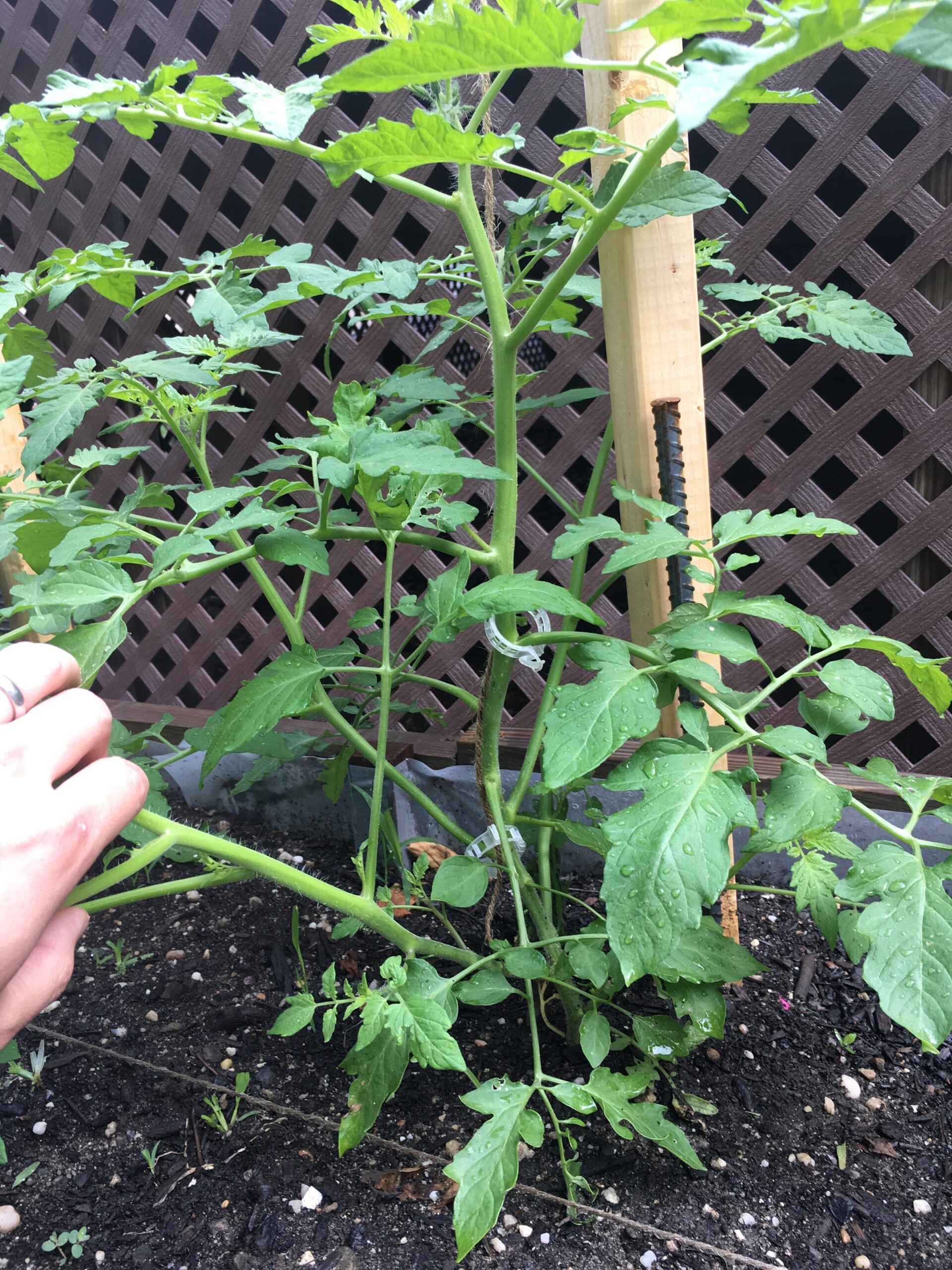
The single-stake method of trellising tomatoes is better applicable for small gardens and determinate tomatoes.
A single sturdy stake – wood, bamboo, or metal is driven into the ground next to each plant. As the plant grows, it’s tied loosely to the stake using twine or cloth strips every 6–12 inches.
Pros:
- Simple and inexpensive
- Easy to implement
Cons:
- Not suitable for heavy or sprawling plants
- Requires frequent tying and pruning
2. Tomato Cages
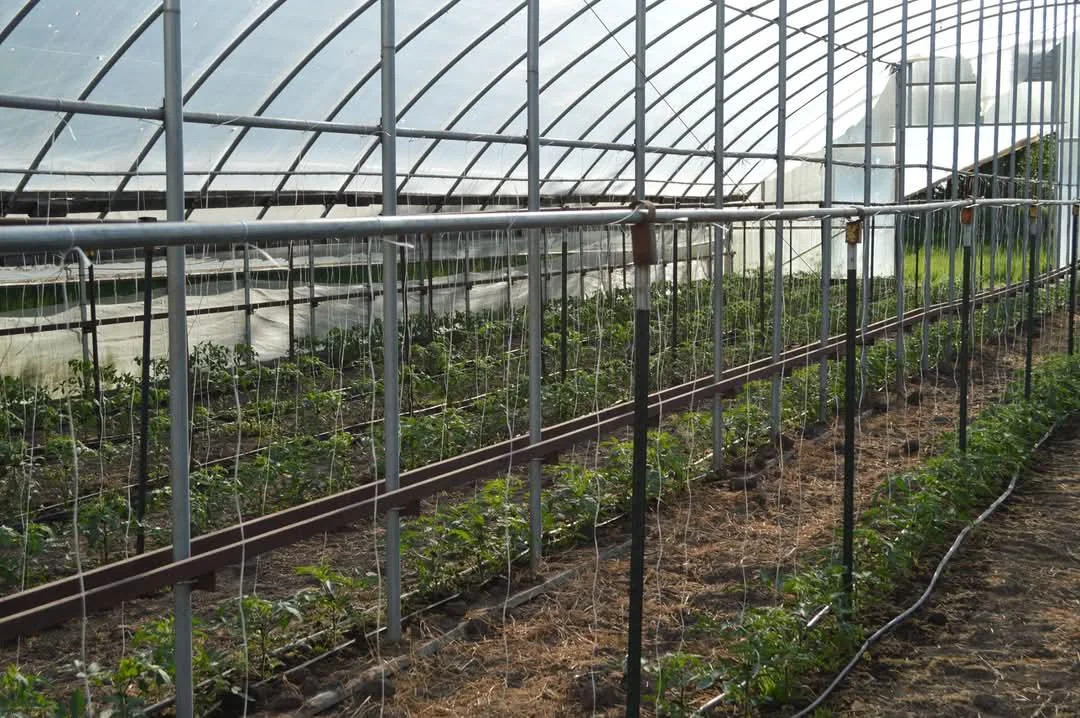
Tomato cages are best for determinate or semi-determinate varieties.
A round or square cage surrounds the plant, supporting it from all sides as it grows.
Pros:
- Low-maintenance
- No need to tie the plant
Cons:
- Commercial cages are often too short for indeterminate types
- Can topple over if not secured well
- For larger tomato plants, build your own cage with concrete reinforcing mesh or, rebar wire cut into 5-foot sections and formed into circles.
3. Florida Weave or Basket Weave
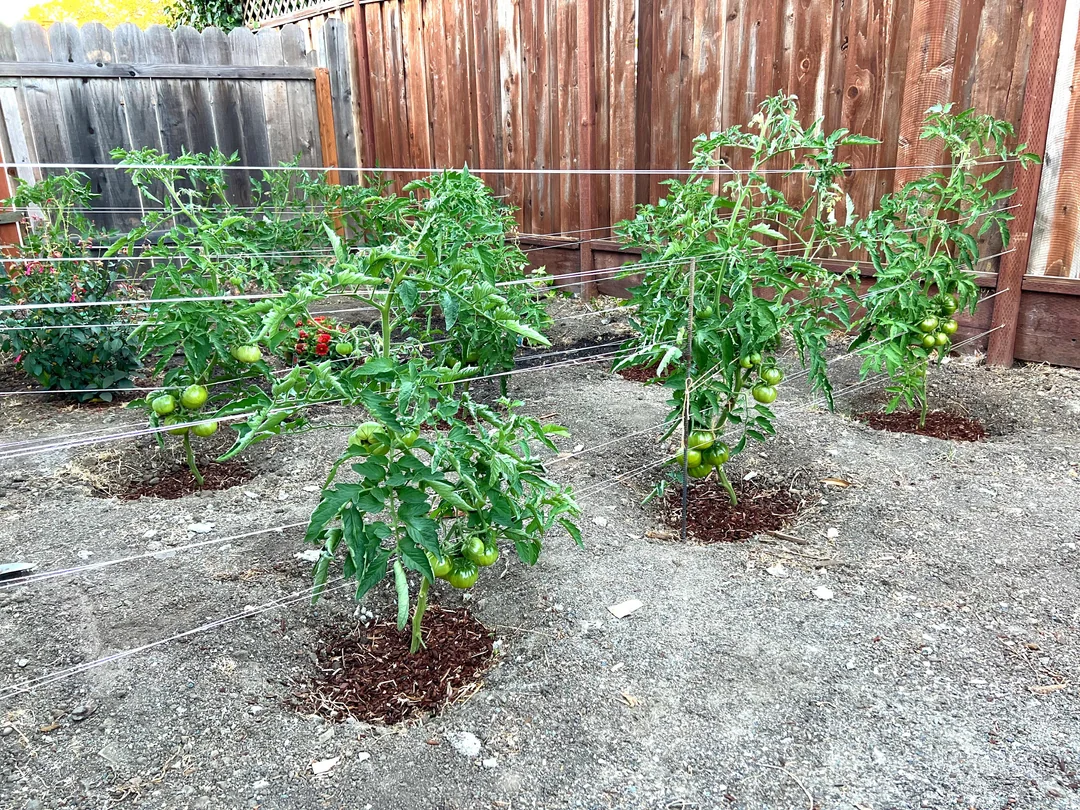
Florida Weave, also known as Basket Weave is best for rows of determinate or semi-determinate tomatoes.
In this method, stakes are driven every 2–3 plants along a row.
Twine is woven between stakes to sandwich the plants between layers of string, offering support on both sides.
Pros:
- Cost-effective for multiple plants
- Relatively quick to set up
Cons:
- Needs maintenance as the plants grow
- Less effective for heavy indeterminate plants
4. Trellis with Vertical Strings
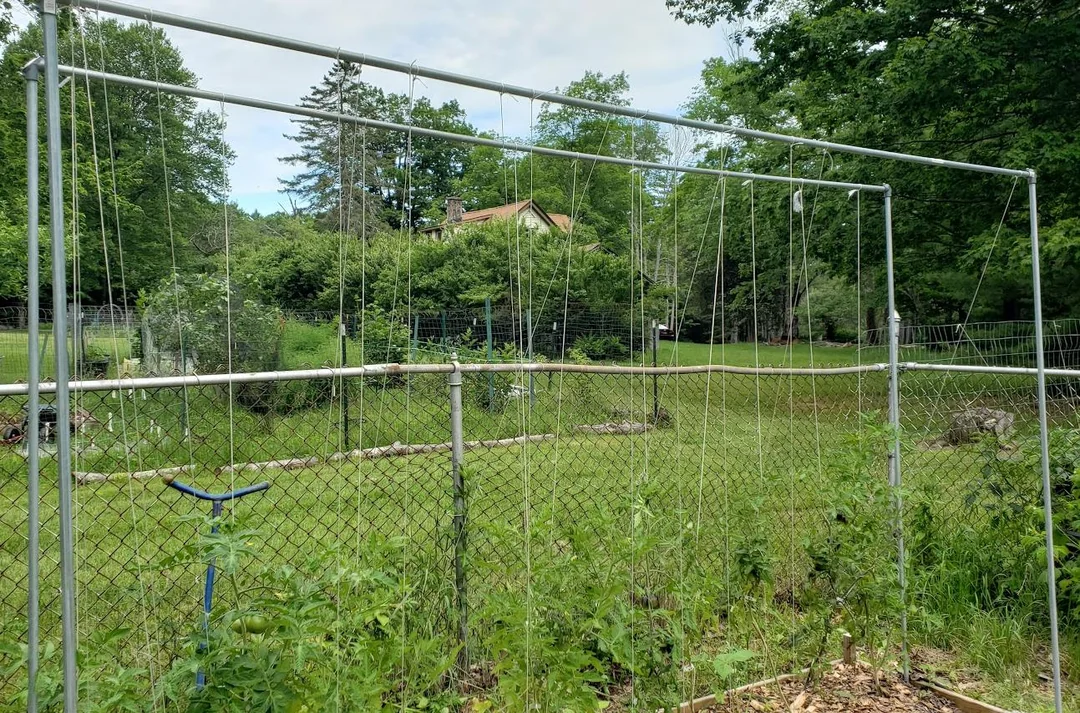
String Trellis is best for Indeterminate tomatoes in greenhouses or raised beds.
How it works? A horizontal bar or wire is strung above the row of tomatoes. From this, vertical strings drop down to each plant. The tomato vine is trained by wrapping it around the string as it grows.
Pros:
- Maximizes vertical space
- Ideal for controlled environments
Cons:
- Requires a sturdy overhead structure
- Needs regular pruning and training
5. Tomato Ladders and Towers
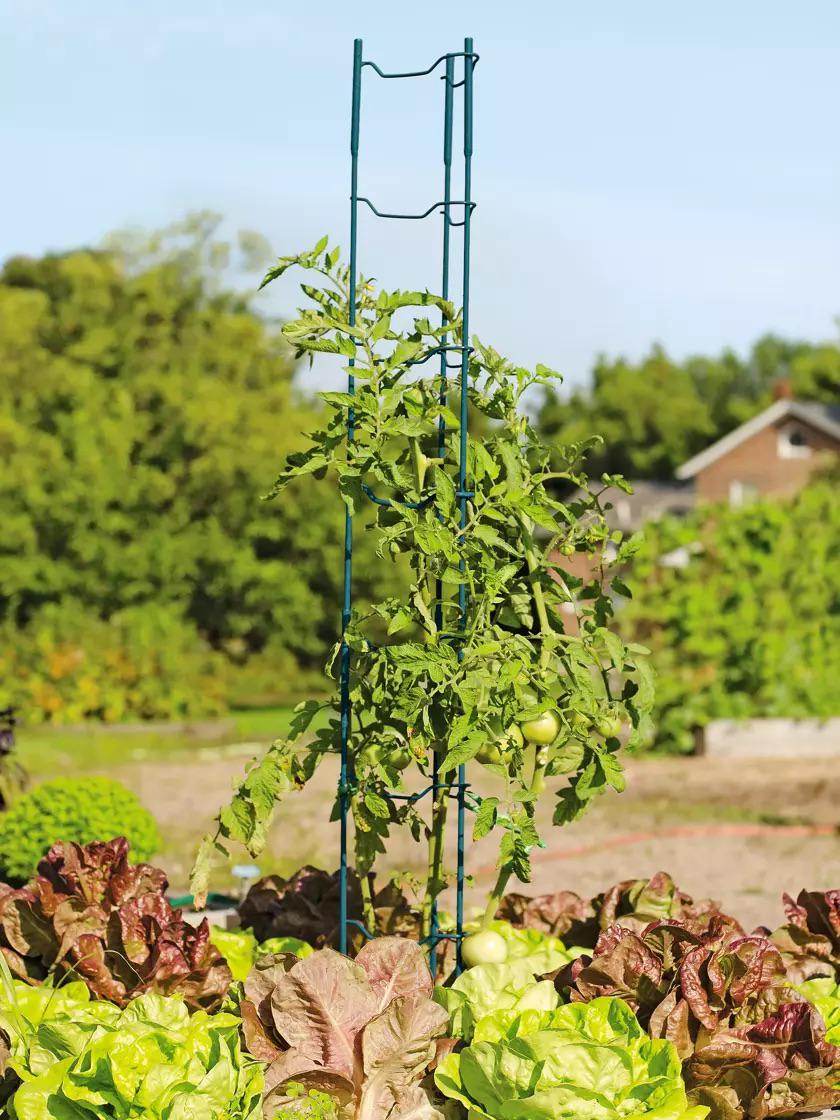
Tomato Ladders and Towers are good for Patio gardens and raised beds.
A ready-made support shaped like a ladder or tower provides good structure for plants to grow upward naturally.
Pros:
- Attractive and reusable
- No tying needed
Cons:
- More expensive
- Not always tall enough for vigorous varieties
Materials You’ll Need To Trellis Tomatoes
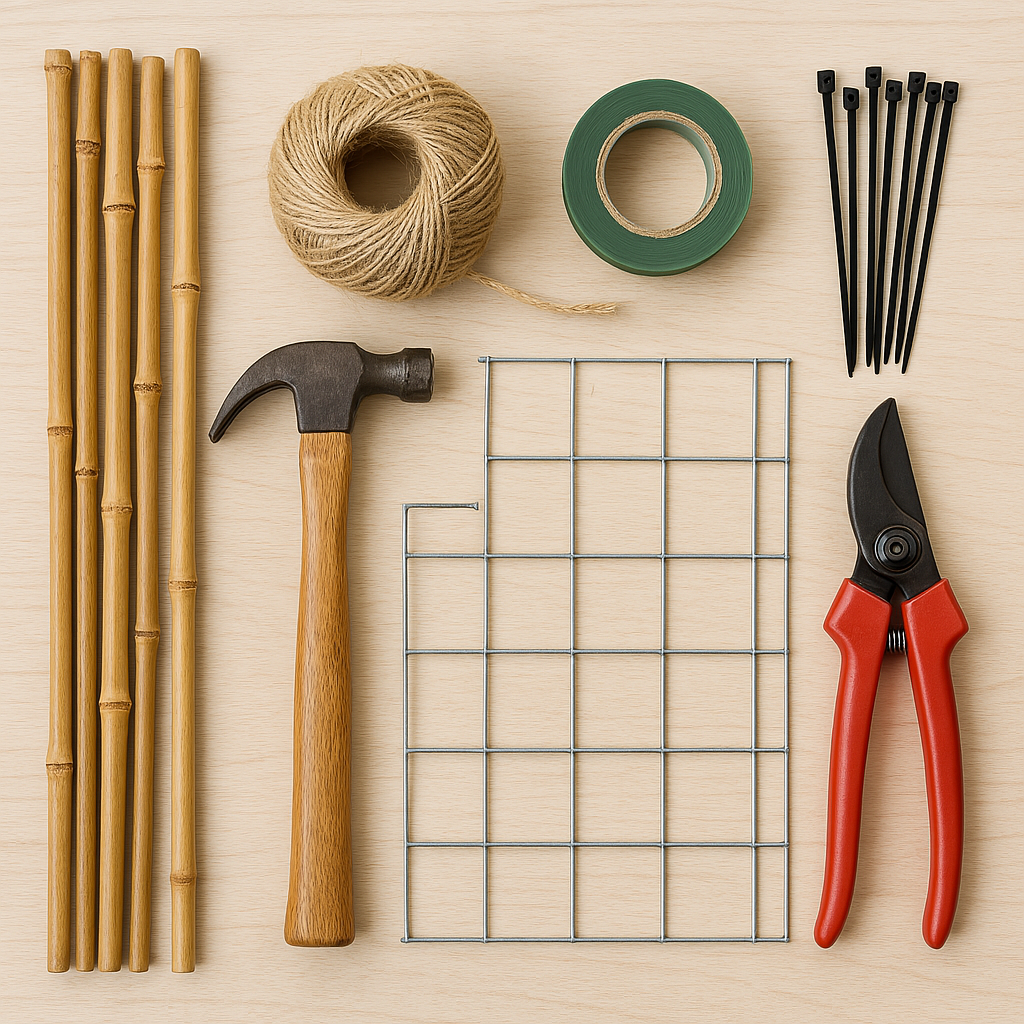
Depending on the method, your trellising kit might include:
- Stakes like wood, bamboo, T-posts, or metal
- Twine, jute, garden tape, or soft ties
- Tomato cages or fencing material or, wire mesh
- Zip ties or clips for string trellis systems\Hammer or mallet for driving in stakes
- Pruners for removing suckers and managing growth
Bonus Tips for Successful Trellising
Install supports early – Put up your trellis system at planting time to avoid damaging roots later.
- Use Soft Ties – Prevent plant damage by using stretchable or soft materials for tying.
- Prune Regularly – Especially for indeterminate tomatoes, remove suckers to focus energy on fruit production.
- Secure Your System – Make sure trellises are anchored well to withstand wind and heavy fruit loads.
- Inspect Weekly – As the plant grows, continue tying or guiding vines and checking for signs of stress or disease.
Common Mistakes to Avoid During Trellising Tomatoes
Here are some common mistakes that you should avoid while trellising tomatoes.
- Using weak stakes for indeterminate tomatoes
- Letting plants sprawl before setting up a trellis
- Overcrowding plants, that can lead to poor air circulation
- Forgetting to prune or tie up rapidly growing vines
Wrapping Up
Trellising your tomato plants is one of the most important steps you can take to ensure a healthy, productive harvest.
With several options to choose from, you can pick the trellising method that best suits your garden size, tomato variety, and available resources.
Whether you go with a simple stake or a sophisticated string trellis, the result is the same – stronger plants, cleaner fruit, and easier maintenance.
Leave a Reply